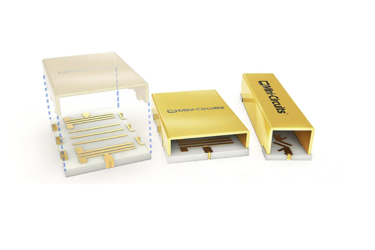An Introduction To RF & Microwave Thin-Film Filter Technology

Finding the right filter for frequency ranges above the 3 GHz range is a perennial challenge for RF system engineers. Designers are typically looking for repeatable performance at production volume and a small, surface-mount form factor robust enough to withstand reflow onto their existing printed wiring board (PWB). Lumped element filters utilizing discrete wire-wound inductors and chip capacitors meet these criteria handily for passbands below about 3 GHz, but frequency response becomes more sensitive to variations in the physical structure of the device and temperature at higher frequencies, rendering this approach impractical.
Several filter technologies support application bands higher into the microwave range, but each comes with compromises, some of which may be non-starters for real-world system requirements. Suspended substrate stripline and cavity filters, for example achieve passbands up to around 40 GHz with outstanding rejection and selectivity, but they’re big, heavy and expensive. Also, because these are not surface-mount technologies, using them with integrated microwave assemblies requires launching the signal off the board to the connectorized filter interface and back onto the board, which adds loss and mismatch at the transitions. This is rarely viable.
Get unlimited access to:
Enter your credentials below to log in. Not yet a member of RF Globalnet? Subscribe today.
